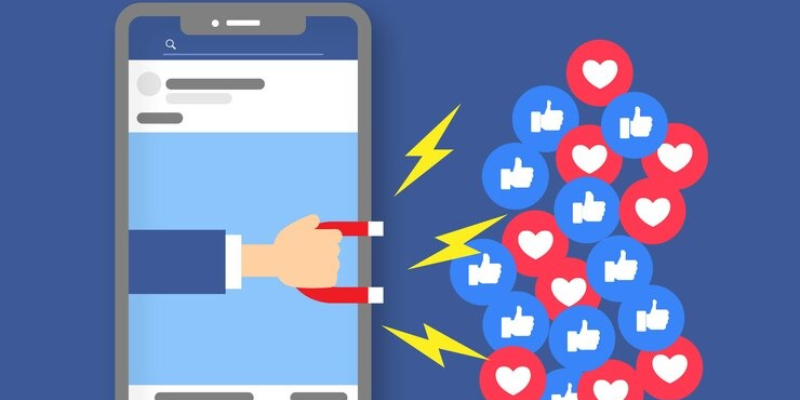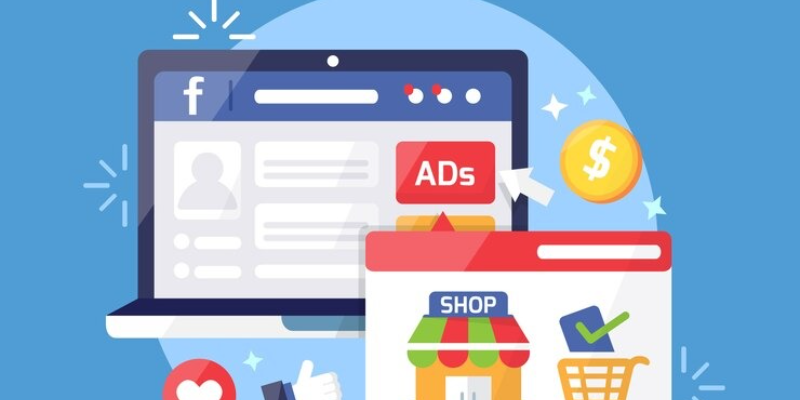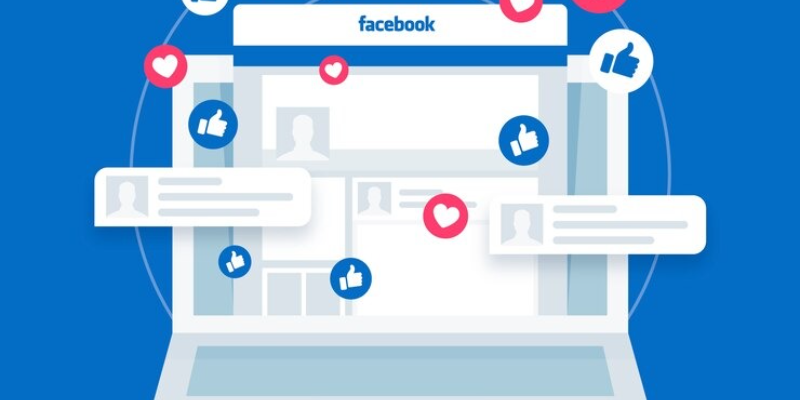

Image ads are the easiest to make, and you can use them to acquire eyeballs as fast as possible to get the word out about your products or services without much complexity. It's simple and visual. Facebook ad images are best for running special offers and product promotion.
Video content is typically more engaging, and the Facebook algorithm prefers video in the feed. Video ads are perfect for telling an inspiring story and can be shareable, which will drive up organic reach. Facebook video ads are great for storytelling, tutorials, product demos, and customer testimonials.
Carousels allow you to show several images or videos within one Facebook carousel ad, each leading to a different link. Its engaging format forces the users to swipe through the carousel, thereby increasing engagement and visibility levels. It works best to share product catalogs, brand stories, and multiple offers. Carousel ads can be found on Facebook Feed, Instagram Feed, and Audience Network.
It is designed for mobile-first experiences. Within Collection ads, there's one cover image or video, and several product images, which are super interactive. It allows the user to discover products within the ad without leaving Facebook. It is the best option for E-commerce, product discovery, and seasonal promotions.
A Slideshow ad is a "light video" composed from a set of still images. Therefore, it's a fantastic deal for advertisers with scarce video production abilities but a desire to still deliver an immersive and engaging experience. You can use slideshow ads to promote products, tell stories, and create brand awareness. You can run slideshow ads on Facebook Feed and Instagram Feed.
Stories are very high-interest, and content is surfaced in feeds only. The full-screen format and ephemeral nature of Stories ads can cut through and grab attention quickly. Plus, they're less intrusive than regular Feed ads, so they could help you reach more people. Facebook Stories ads are time-sensitive offers, behind-the-scenes content, and short-form videos. Facebook story ads can be found on Facebook Stories and Instagram Stories.
These ads are especially effective for retargeting people who have visited your site or app before. Facebook will dynamically show the most relevant products to individual users based on their behaviors to increase the likelihood of conversion. Dynamic ads are suitable for E-commerce, retargeting, and product recommendations.
Lead ads enable people to subscribe to newsletters, offers, or other promotional content without leaving Facebook. It usually leads to significant engagement and lead capture. They are best suited for lead generation, signups, and email address harvesting.
Facebook Marketplace ads display to users who are actively searching for items to purchase, making your products available to an extremely engaged, purchase-ready audience. These ads render well within the Marketplace interface. They are good for local sales, E-commerce, and selling deals.
Facebook ads can play a really serious role in building and growing small businesses. Since Facebook has the largest user base with sophisticated targeting options that are relatively inexpensive compared to traditional advertising, it is the most effective tool for reaching new customers, creating brand awareness, and driving sales for small businesses. Here's how Facebook ads can support small businesses:

Some of the greatest advantages of Facebook ads include targeting the right audience based on different criteria, such as: Demographics: Age, gender, location, relationship status, job title, education, etc. Interests: Hobbies, entertainment, sports, and other interests about the products or services being offered. Small businesses upload a customer list, email, or phone number and will find existing customers or even build lookalike audiences of new leads similar to present ones. Targeting the right people helps small businesses in efficiently advertising and optimization of chances of conversion.
In contrast, Facebook ads are relatively cheaper for small businesses, which may not have large budgets. Small businesses can place budgets at their convenience, track their performance in real-time, and take corrective measures appropriately. If properly managed, small businesses can achieve a very high return on investment.
Facebook ads can be highly useful for small businesses that want brand awareness very quickly, especially small businesses that are just starting or those seeking growth. It helps introduce a brand to a large audience and keeps the brand top of mind for potential customers through regular and well-targeted ads. For instance, retargeting ads can help target people who already have interacted with a business's website or social media pages, making their presence more consistent.
One of the benefits of Facebook ads for small businesses is driving traffic to their website or E-Commerce stores. Through engaging formats of ads using carousel ads, video ads, or dynamic product ads, small businesses can properly show their products and services to engage users on clicking which subsequently results in visits, conversions, and finally, sales.
You can also apply the power of Facebook ads with Lead Ads, which will allow you to collect users' contact information without taking them off of the Facebook platform. Lead generations would be extremely useful for business regarding service industries, consulting firms, newsletters, or promotions. By designing a lead-generation campaign, small businesses are building a list or database for further marketing efforts.
For small locally focused businesses, Facebook ads allow for hyperlocal targeting. Businesses can show ads to people within a specific radius of the location, which makes it ideal for restaurants, retail shops, or service providers who want to attract customers in their area.
Facebook has multiple ad formats that can be tailored to specific goals. Ads with images or Videos are great for showing a product, telling the client's view on it, or creating a brand image. Carousel ads enable businesses to show off various products or features all in one ad. It is great for businesses that sell different products on an E-commerce website. Slideshow Ads are lightweight versions of video ads, especially very good for small businesses with a budget that cannot venture into heavy video production. Collection Ads can be browsed by users right from the ad and hence are suitable for E-Commerce businesses. This flexibility allows small businesses to experiment with different formats and find what works best for their audience.
Facebook also equips businesses with the power of detailed analytics and reporting tools to measure ad performance in real-time, such as impressions, click-through rates, conversion rates, and cost-per-click. These insights enable small business owners to make informed data-driven decisions, optimize ads, and achieve greater effectiveness in campaigns.
Small businesses can utilize Facebook ads to engage with their existing customer base and establish loyalty. For instance, they can create promotions or other offers for people who previously may have interacted with the business. They can also add social proof, such as customer reviews and user-generated content, to make the ads more trustworthy.
One powerful tool on Facebook is retargeting, which enables businesses to present ads to people who have previously viewed a business's website, interacted with a business's Facebook page, or expressed interest in one of their products or services. Retargeting keeps the brand in front of people who are already familiar with it, which increases the possibility of conversion.
Most Facebook users access the site on their mobile, so Facebook ads are automatically mobile-friendly. Small businesses can reach potential customers anywhere, whether at home, work, or even on the go. That is especially helpful to businesses that have mobile-optimized websites or apps.

Best Facebook ad campaign results are achieved through a strategic plan, data-driven decision-making, creative excellence, and continual optimization. Here are the best ways to create Facebook ad campaigns that can give you the best possible outcome:
Before creating any ad, you have to define what you want to achieve. Facebook's ad platform lets you choose several campaign objectives. Align your ad objectives with your business goals. Select objectives based on the customer journey stage.
Select the right audience to get the right return from Facebook ads. Facebook offers powerful
Your creativity is what your ad lives and dies by, so make it attention-grabbing and action-driving. According to your goal and the content you would like to share, you may choose from a picture, a video, a carousel, or a collection ad type. Use images or videos that speak well about your brand. Video engagement tends to be bigger, but an image-based ad can also work as long as it's optimized for mobile.
Your copy has to be as short as possible, clear, and to the point. Your ad has to feature a strong, clear CTA, such as "Shop Now," "Learn More," or "Sign Up," to guide the user to the next step. Your brand message should be consistent across all platforms and formats.
The best usage of the conversion tracking tool by Facebook is the pixel. To track what's happening with the user and boost performance, one has to focus on using pixel provided by Facebook. The Facebook Pixel can be considered the tool that helps in tracking website visitors and measuring conversions (purchases, sign-ups, etc.). The best practice when using Facebook Pixel is to set up the pixel on your website to track user actions and measure ad effectiveness. Set up custom conversions to track specific actions that matter to your business. Retarget people who interacted with your site or app, using Dynamic Ads.
More than 90% of all Facebook users use mobile, so you must optimize the ads on mobile as well. Use vertical videos for stories and ads, as they perform better on mobile screens. Make sure landing pages are mobile-friendly. Slow-loading or non-responsive pages can be very effective in sending off large bounce rates. Use short, impactful text. Keep mobile ads very brief because the users scroll on their mobile phones fast.
Budgeting and bidding do affect your ad's performance. You also get to choose between manual and automatic, or whether you choose to focus on CPC, CPM, or CPA. Run small tests first before committing more resources.
Continuously A/B test different variants of your ads to discover which combination of image, copy, CTA, and audience targeting is best for you.
Test various images or videos. Check which variations of call-to-action phrases work better for you, for example, "Shop Now" vs. "Learn More". Identify which audience is more responsive to your ad by testing with variations of demographics.
Featuring customer testimonies, reviews, or UGC can add more trust and generate more conversions. Humans usually trust those advertisements with authentic content that the people around them can relate to.
Feature reviews and ratings in the advertisement's copy or visual.
Apply UGC in the form of pictures or videos of customers to make ads more relatable
Retargeting ads are good for reconnecting with users who earlier have interacted with your brand-website visitors, engaged with your content, or deserted carts. Use Facebook Pixel to retarget users who visited a specific page. For example, product pages or checkout pages. Show ads to people who have added items to their cart but didn't check out.
Facebook ads are not set up and forgotten. Continuous optimization based on performance data will get you better results. You have to monitor metrics including CTR, CPC, CPA, ROI, and frequency to track performance. You can narrow down your audience based on performance. Raise the budget of successful ads.
Facebook always rolls out new features and tools. Stay updated about the latest updates to make sure you take advantage of all that this platform has to offer.
For example, You can create a Facebook Shop if you have an E-commerce store and your customers can shop right from your ads.
Facebook is one of the best social media platforms to promote your small businesses. You can promote your brand using different Facebook ad formats depending on your requirements. Bud, a Facebook company in Bangalore, can help you create engaging and interesting Facebook ad campaigns. We look forward to hearing from you soon.